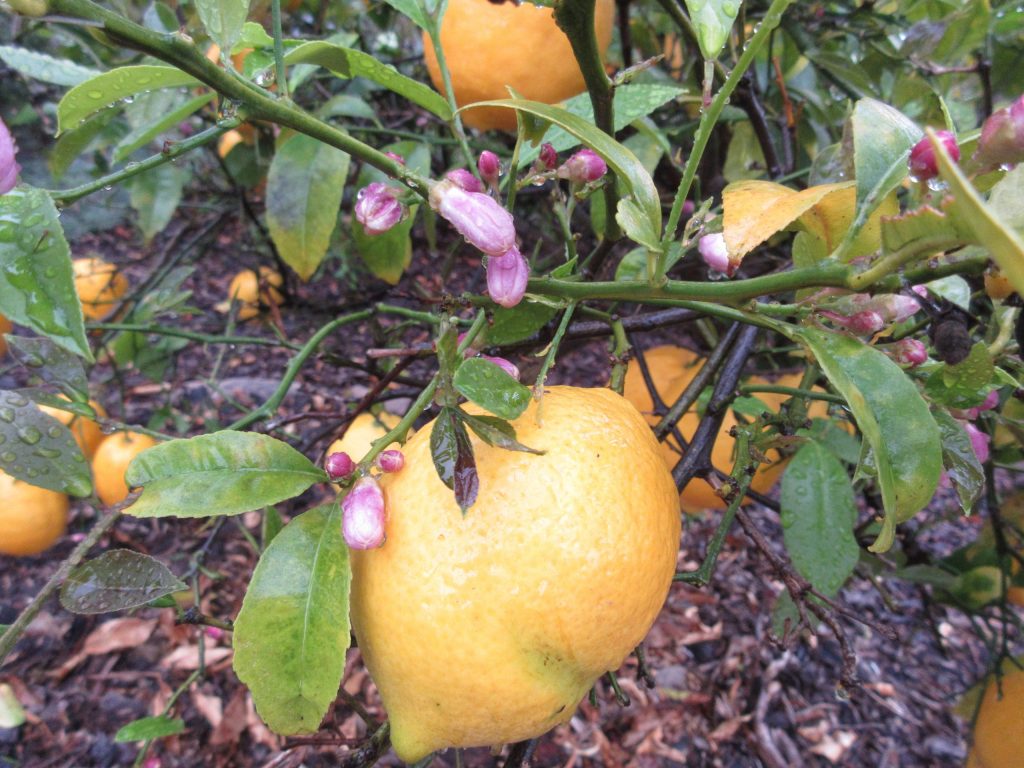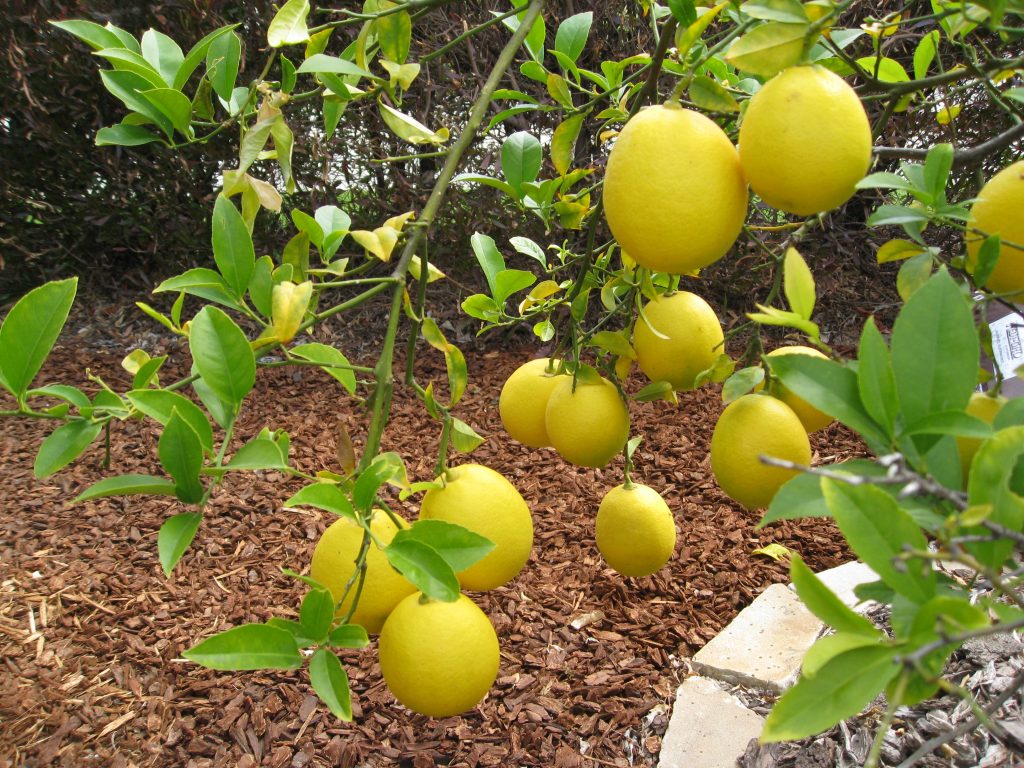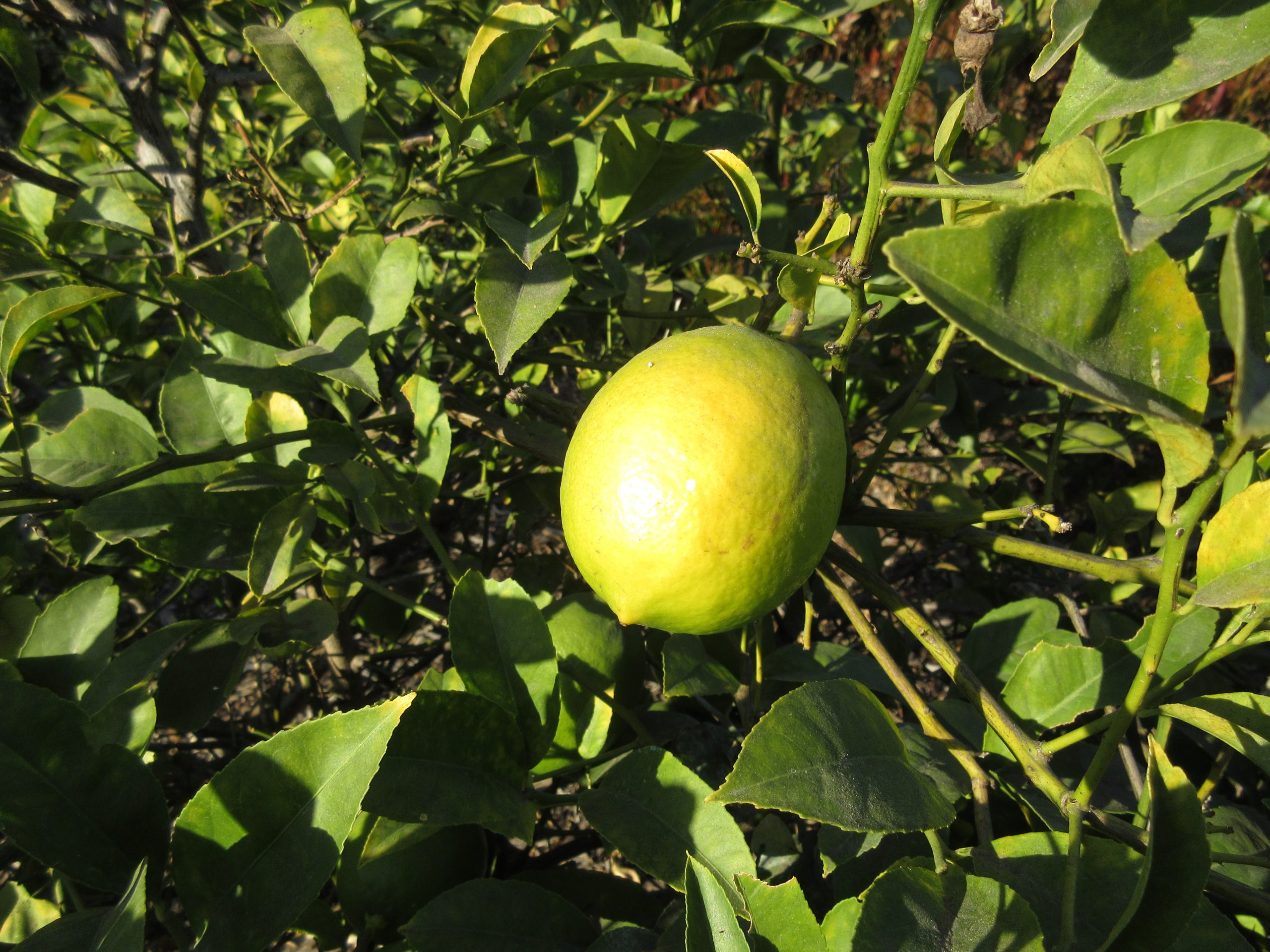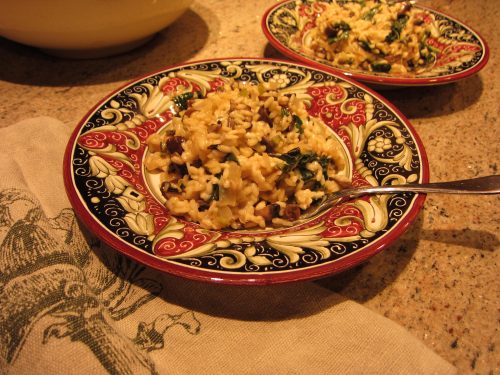A question came in to Ask Gardenerd this week from Beverly Gardner. She asks, “I pitched some lemon seeds in a planter that was not being used. I wasn’t trying to grow them but grew they did. What I should do with them– there were three that came up? I was so surprised to see them. Right now I am just watering them wondering if I want to keep them. But if it isn’t too hard to grow I would keep them and bring them inside in the winter. Any help would be appreciated. Thanks, Beverly Gardner”

You’ve asked a great question, Beverly. Before we talk about how to care for those seedlings, let’s talk about whether or not it’s worth the effort. Read this excerpt from my new book, Grow Your Own Mini Fruit Garden:
From Grow Your Own Mini Fruit Garden
“Fruit trees require pollination to produce a fruit. You know the basics: male flower parts pollinate female flower parts, the same as what happens with many vegetable crops. Most fruit trees are monoecious, meaning the male and female parts share the same flower (aka, perfect flowers), while other monoecious trees have separate male and female flowers (imperfect flowers). Some trees take a different approach entirely. They have A and B flowers that are both male and female, but at different times of the day. Crazy! But let’s stay focused.
Once pollination occurs, a fruit forms. But the seed inside that fruit has a genetic past. It contains the history of all the genetic material that came in contact with that flower during bloom. Bees and other pollinators traffic pollen from flower to flower without regard for which cultivar it is. Therefore, that seed contains genetic material from other varieties or even other members of the same plant family. If you try to plant that seed and grow a new tree from it, the result will most likely be different from the mother fruit. Seeds inside fruits are wildcards that don’t grow true to type.

Bearer of Bad News about That Lemon Tree Grown From Seed
So you can see, Beverly, that you may not get the results you are expecting from a lemon tree grown from seed. Most fruit trees are grafted to avoid this inconsistency. That’s why I generally don’t recommend growing fruit trees from seeds or pits (yeah, as in avocados). It’s heartbreaking to put in the time and effort over the next 5-10 years only to get a fruit that doesn’t taste good, or isn’t even what you thought it would be.
However, if you want to see how it goes, plant each seedling in it’s own pot, and water them well over winter (you’ll need to bring them indoors if you live in a cold-winter climate). Give them a little organic fruit tree fertilizer in spring and give them plenty of sunlight to grow. Move them up to larger pots as they grow and see what happens. I know exactly 1 person who has successfully grown lemons from seed that tasted good. So all is not lost.
Good luck and keep us posted! Thanks for writing in.
Gardenerds, consider getting a copy of Grow Your Own Mini Fruit Garden to answer other fruit tree questions you have




